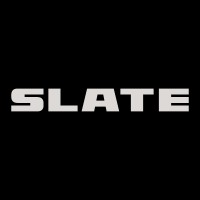
Head of Powertrain and Propulsion
ABOUT Slate
At Slate, we’ve got one job: building a vehicle you’ll fall in love with, right here in the USA. We believe that car buyers—not car companies—should call the shots. We like looking at a road, not a screen. We don’t like paying for stuff we don’t need. We like picking out the stuff we do need. We think dings are badges, not blemishes. But we know not everyone likes what we like. So, we built you a Slate: you make it yours.
Who we are looking for:
Slate is currently seeking a dynamic, highly organized, and experienced Head of Powertrain and Propulsion to join our growing team at Slate. This is an exciting opportunity to contribute to a transformative organization at the forefront of sustainable mobility.
What you get to do:
The Head of Powertrain and Propulsion is responsible for setting strategic vision, organizational structure, and technical direction for all Powertrain and Propulsion systems and components. Operating at a Director level, this leader is accountable for hiring top talent, developing a high-performing engineering organization, and implementing processes that scale with business needs. They ensure alignment between system-level architecture and vehicle performance targets, driving cross-functional collaboration to deliver innovative, compliant, and high-quality solutions. This role also leads long-term technology road mapping, sourcing strategy, and technical execution across critical domains such as High Voltage Battery Systems, Propulsion Architecture, and Electrification.
- Lead and grow the Powertrain and Propulsion engineering team, including Sr. Managers, Managers, and Lead Engineers.
- Translate vehicle-level technical specifications and performance targets into component-level requirements.
- Develop and oversee component specifications to ensure alignment with Product Planning and Vehicle Integration.
- Ensure safety and compliance documentation is completed and approved through the appropriate teams.
- Manage Design Release and Development engineers in collaboration with Validation, Safety, Compliance, and Product Planning.
- Lead system architecture development to ensure all features and modules are captured in the overall design.
- Define and manage development, sourcing, and engineering of system components.
- Oversee the creation of DFMEAs, DVP&Rs, HARA Risk Analysis, and other technical validation tools.
- Direct Engineering, Development, Testing, and Release of:
- High Voltage Battery systems
- High Voltage Systems
- Powertrain Calibration
- Thermal Systems Engineering (battery and occupant heating/cooling)
- Thermal and Range Systems Modeling
- Electronic Drive Module (EDM)
- Lead long-range propulsion planning and innovation, particularly in battery technology development.
- Ensure delivery of all systems to Gate requirements while identifying and communicating risks and development priorities.
What you bring to the team:
- Bachelor’s degree in Mechanical Engineering, Electrical Engineering, or a closely related discipline from an ABET-accredited (or equivalent) program.
- Over 10 years of experience in vehicle development, with deep knowledge of the complete product lifecycle.
- Demonstrated leadership capabilities with a track record of building and guiding high-performing engineering teams.
- Excellent communication and interpersonal skills, with the ability to cultivate strong cross-functional partnerships.
- Skilled in leading technical discussions, making informed trade-off decisions, and delivering well-optimized solutions with keen attention to detail.
- Comprehensive understanding of vehicle systems and cross-functional engineering development processes.
- Proficient in structured problem-solving methodologies such as Six Sigma Black Belt, DFSS, Shainin, or similar approaches.
- Direct experience in Design Release Engineering and Change Management, ideally within the automotive sector.
- Collaborative and proactive, with a passion for team building and a strong ability to succeed in fast-paced, evolving environments.
Why Join Team Slate?
At Slate, we’re fueled by grit, determination, and attention to detail. The start-up spirit of ingenuity and resourcefulness move our business forward. Team Slate fosters a culture of excellence, innovation, and mutual respect, and is motivated by shared principles.
- Safety First
- Delight Customers
- One Team
- Relentless Improvement
- Fast, Frugal and Scrappy
- Respectful Collaboration
- Positive Legacy
We want to work with people that reflect the communities in which we operate:
- Slate is proud to be an Equal Employment Opportunity and Affirmative Action employer. We do not discriminate based upon race, color, religion, gender, gender identity or expression, sexual orientation, national origin, genetics, disability, age, veteran status, marital status, parental status, cultural background, organizational level, work styles, tenure and life experiences. Or for any other reason.
- Slate is committed to providing reasonable accommodations for qualified individuals with disabilities in our job application procedures. If you need assistance or an accommodation due to a disability, you may contact us at recar-talent_acquisition@slate.auto.
Apply for this job
*
indicates a required field